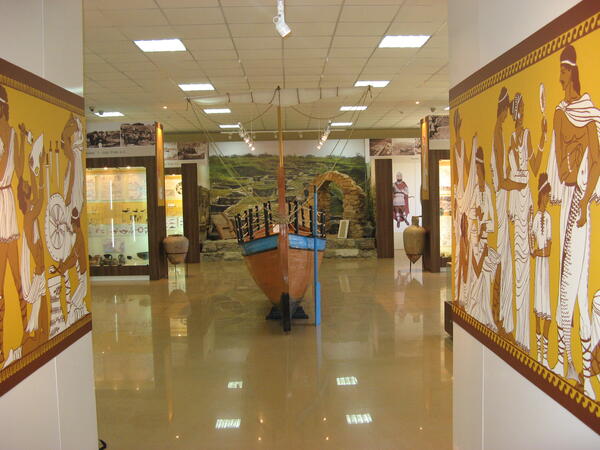In 2009, the permanent exhibition of the Tanais Archaeological Museum-Reserve opened in a new museum building. The exhibition showcases the results of scientific research conducted in Tanais, presenting a chronological description of various periods in the ancient settlement’s history.
The first section of the
exhibition is dedicated to the Elizavetovskoye Settlement. When excavations
began, it was mistakenly associated with early Tanais. The section displays numerous archaeological, including clay vessels, flasks,
jugs, and amphorae with ancient painting, as well as a model of a Greek
merchant ship, maps of trade routes, and artifacts discovered in a burial
mound, which provide insight into the life and handicrafts of that time period.
The next and largest section of the exhibition explores the 1st–3rd centuries CE, the golden age in the history of Tanais. Special attention is
paid to other settlements around Tanais, which were economically and
politically connected to the ancient city and formed its agricultural district.
The fourth section of the exhibition is dedicated to the period of decline of
the great city. During that time, in the 4th–5th centuries CE, it was inhabited by barbarians, most likely, the Sarmatians. Very
few artifacts from this period of the settlement’s history have been found.
However, there is at least one interesting archaeological discovery — the bone
plates of a composite bow, similar to Hun bows in design. The barbarians did
not stay in Tanais for long. At the turn of the 5th century, the
ancient city was abandoned by its population forever. The last section of the
exhibition displays artifacts found at the site of the Tanais necropolis,
including jewelry, vessels, small altars, figurines of deities, deformed
skulls, human skeletons, and burial monuments. This small section, symbolizing
the death of the ancient settlement, completes the museum exhibition.
Exhibits are marked with AR stickers for identification purposes.

